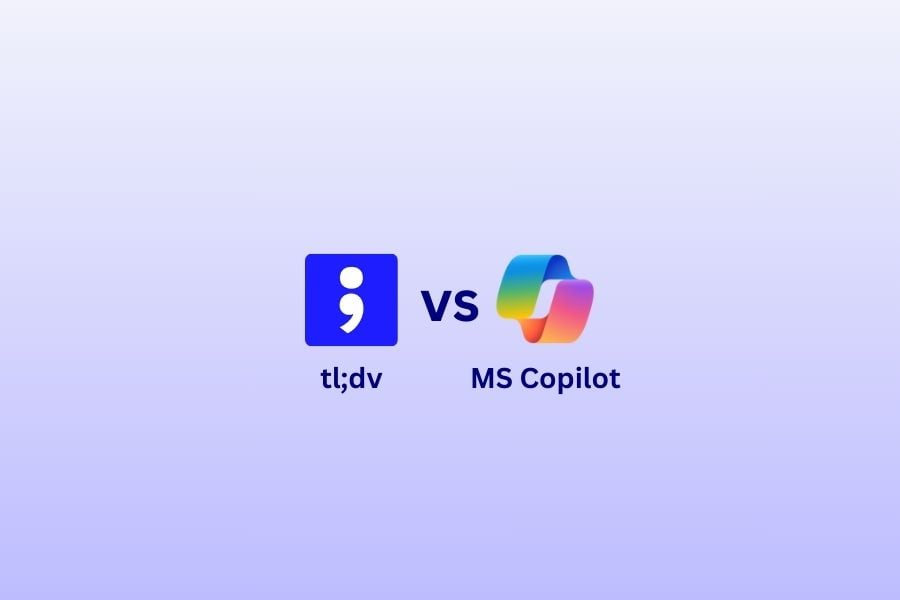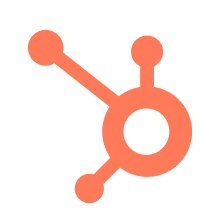If you’ve spent any time in the Microsoft ecosystem, you’ve probably heard the acronym “MCP” thrown around. Depending on who you’re talking to, it could mean wildly different things. Microsoft Certified Professional? Sure. Microsoft Cloud Partner? That too. Minecraft Coder Pack? Weirdly, yes. But there’s a new kind of MCP emerging in the world of AI and workplace automation, and it’s one that could quietly redefine how tools like Microsoft Teams operate: Model Context Protocol.
At its core, Model Context Protocol (MCP) is about giving AI more memory, and giving it access to use your tools, platforms, and apps on your behalf. Think of it as the highway that connects all your accounts intuitively. In practice, this could mean smarter meeting automations where your CRM systems are automatically filled in based on conversational context as soon as the meeting ends. This is just an example, but the possibilities are endless.
Now, MCP as a formal standard is still new; most collaboration tools, including Teams, don’t fully support it yet. But it’s coming. And while we wait for the big players to catch up, tools like tl;dv are already putting the promise of MCP into action. In fact, tl;dv may be the closest thing to an MCP-powered assistant you can actually use right now. But before we get into that, what actually is Model Context Protocol?
What is Model Context Protocol?
In the simplest terms, Model Context Protocol (MCP) is a way for AI to remember, understand, and build upon what it already knows across apps, tools, and environments. If you think of each of your tools as separate islands, MCP is like giving AI models a boat. They can go into your tools and extract information, input data, or trigger actions. This is HUGE for automation.
This matters more than ever in the age of large language models (LLMs). Today’s AI is smart, but forgetful. It can write your emails or summarize your meetings, but the moment you close the app or start a new task, it forgets everything. MCP proposes a new paradigm: context that travels with you. With a protocol like this in place, AI wouldn’t just generate responses—it would understand the full picture.
What Are Some Real-World Possibilities of MCP?
It’s all well and good trying to digest the theory behind Model Context Protocol, but what does it actually mean in practice? Imagine this:
You start a conversation in Microsoft Teams, reference a document, and assign an action item.
Later that day, you’re drafting a follow-up email in Outlook and your AI assistant already knows what happened in the meeting and suggests a perfect summary.
A week later, you open a doc in Word, and it automatically highlights decisions made in past discussions, linking back to the meeting notes and relevant tasks.
Or maybe your AI flags that a topic from today’s product meeting overlaps with a customer concern raised last month. It could pull insights from your internal knowledge base without you lifting a finger.
That’s the promise of MCP: a seamless, persistent context layer for AI that doesn’t just react, but proactively supports your workflow. It’s early days, but the building blocks are being laid. Companies that adopt this model early will have a serious edge over the competition.
What Would MCP Look Like in Microsoft Teams?
Unlike Google, who haven’t publicly acknowledged Anthropic’s MCP, Microsoft is actively working to integrate it into their products. While it’s not yet a part of Microsoft Teams, Microsoft announced it was teaming up with Anthropic to create official C# SDK for Model Context Protocol. Who’d have thought Microsoft was capable of adopting open standards?
To see how to get started with MCP for Copilot Studio, check out Microsoft’s mini tutorial below.
So, Is MCP Integrated With Microsoft Teams?
As of now, Microsoft Teams does not have an official integration with MCP. However, it seems likely that it will in the future, judging by how involved Microsoft is becoming with MCP. Not to mention, in 2025, Teams users generated over 5 billion meeting minutes in a single day! The ability to automate workflows with all those minutes will help a lot of businesses (and individuals).
But just for a minute, let’s imagine that MCP was already integrated with Microsoft Teams. What could we expect?
- Context-aware meetings
- Persistent memory across meetings
- Seamless integration with internal knowledge bases
- Automatic post-call syncing
Context-Aware Meetings
Imagine initiating a Teams meeting where an AI assistant, powered by MCP, already understands the project’s context, recalls past meeting notes, tracks the task list, and identifies responsible team members. This would eliminate the need for repetitive briefings and streamline discussions.
Persistent Memory Across Meetings
An MCP-enabled model could remember discussions from previous meetings, offering reminders like, “This topic was last discussed in the Sales Weekly meeting on March 15.” Such continuity would prevent redundant conversations and ensure follow-ups are based on accurate historical data.
Seamless Integration with Internal Knowledge Bases
With MCP, Teams could automatically pull relevant information from internal documentation or databases during meetings, providing participants with real-time data and insights without manual searches.
Automatic Post-Call Syncing
MCP enables AI to act autonomously. What this means is that when your MS Teams call ends, you’ll find your CRM has already been updated, tasks have already been assigned on Notion, Asana, or Salesforce, and follow-up emails have already been drafted and are waiting for your approval. The AI can act on its own and will update all your tools when necessary.

tl;dv and Copilot can both join your meetings and offer insights. But one is built for this purpose and one just does it as an afterthought. Read here for a comprehensive comparison.
So… What If You Want MCP Now?
While Model Context Protocol (MCP) is still on the horizon for many platforms, you don’t have to wait to experience its benefits. tl;dv offers functionalities that mirror what MCP promises, providing an advanced solution for your meeting needs today.
tl;dv: The MCP Front-End That Already Exists
While Model Context Protocol primarily operates as backend infrastructure, tl;dv is an AI meeting assistant that brings MCP’s envisioned capabilities to life through a polished, user-friendly interface. This means organizations have access to an MCP-like experience today, enhancing virtual meetings across platforms such as Zoom, Google Meet, and, of course, Microsoft Teams.
tl;dv is already delivering on the promise of MCP for meetings. It turns the abstract idea of context-aware, AI-powered collaboration into something you can actually use in Microsoft Teams today. Here are some of its most powerful MCP-like features:
- Automatic CRM updates
- Meeting memory and multi-call intelligence
- Automated, recurring reports
Automatic CRM Updates
Imagine wrapping up a Teams call with a client and not needing to jump into your CRM to log every detail. Heaven, right?
tl;dv automatically records, transcribes, and summarizes your Teams meetings, and pushes those insights directly into your CRM and over 5,000 other tools. For sales teams, this means no more data entry drudgery. Reps can focus on the relationship, while the AI handles the admin.
Even better? tl;dv lets you customize how these summaries are formatted. You can create different note templates for different meeting types: one layout for sales calls, another for onboarding sessions, and yet another for internal check-ins. It’s your format, your rules.
Meeting Memory and Multi-Call Intelligence
One of the key promises of MCP is persistent memory across interactions. tl;dv is already doing this.
Its conversational AI has full recall across your meeting history. You can ask it to find that specific moment from last quarter’s kickoff or analyze trends across every sales call this month. Want to know how often competitors are mentioned? Which customers keep raising the same objections? tl;dv pulls it all together in seconds.
Sales managers also get powerful speaker analytics: think talk ratios, filler word counts, and adherence to sales scripts. Reps can self-coach. Leaders can see who’s improving. And all of it is grounded in real data.
Automated, Recurring Reports (Without Waiting on Microsoft)
Let’s say you want a weekly report summarizing customer success calls—specifically the ones where pricing or churn risk comes up. With tl;dv, that’s easy.
Set your filters, pick your frequency, and tl;dv will send targeted AI summaries straight to your inbox. You can track trends, identify patterns, or even compare performance over time.
And while MCP in Microsoft Teams might bring this level of automation in the future, tl;dv lets you act now. It’s not in beta and it’s not theoretical; it’s a full-featured product, battle-tested across Teams, Zoom, and Google Meet.
tl;dv’s launched it’s own MCP server
tl;dv was thrilled to announce the release of the official Model Context Protocol (MCP) server for tl;dv – the first of its kind to offer full support for Google Meet, Zoom, and Microsoft Teams.
tl;dv Is What MCP Wants to Be When It Grows Up
MCP is a powerful idea, but it’s still early days. Microsoft is helping to build the back-end, but tl;dv is already out in the wild with an accessible front-end that’s designed for actual humans.
From beautiful UI to powerful AI insights, tl;dv is setting the bar for what AI in meetings should look like. It’s platform-agnostic, integrates deeply with the tools you already use, and skips the fluff in favor of real value.
While the big players are still whiteboarding the future, tl;dv is living it. And guess what? You’re invited along for the ride.
It’s free to get started with unlimited recordings, transcriptions, and summaries. Setup takes two minutes. So if you’re using Microsoft Teams and want to experience what MCP might one day become, you don’t have to wait. You can just… start.
What Comes Next: MCP’s Roadmap, tl;dv’s Reality
Model Context Protocol is clearly part of Microsoft’s long-term vision for smarter, more context-aware collaboration, but it’s not available in Teams yet. Right now, it lives in Copilot Studio, focused on backend interoperability and agent design. That’s exciting groundwork, but it’s still largely invisible to most end users.
tl;dv, on the other hand, brings those backend ideas into the front-end reality. It’s turning the dream of persistent memory, cross-meeting intelligence, and platform-agnostic integration into a polished, usable layer that already works for Microsoft Teams (plus Zoom and Google Meet). If you’ve been waiting for MCP’s impact to reach your day-to-day workflow, the wait is technically over.
So what comes next? Anthropic will keep iterating on MCP, and eventually it may show up natively in Teams. But if you want to experience the future of meetings now—with smart summaries, seamless integrations, and true organizational memory—tl;dv is the way to get there today.
FAQs About Microsoft Teams and Model Context Protocol (MCP)
What is Model Context Protocol (MCP) in Microsoft Teams?
MCP is a framework that enables AI models to share, access, and understand context across various applications or environments. In the context of Microsoft Teams, it allows for seamless integration and smarter interactions, with the potential to provide persistent meeting context, cross-app intelligence, and automatic task follow-ups, which would enable more efficient collaboration.
The important thing to note is that MS Teams doesn’t currently support MCP integration, so the benefits are theoretical. tl;dv, however, operates in much the same way as MCP but with a user-friendly design.
Is MCP currently available in Microsoft Teams?
No, MCP is not yet fully integrated into Microsoft Teams. While Microsoft has introduced MCP in some other areas, including Copilot Studio, it is still in the early stages and has not been released for general use within Teams meetings or collaboration tools. However, it’s a significant part of Microsoft’s vision for the future of productivity tools.
What benefits will MCP bring to Teams once it’s available?
Once integrated, MCP will allow Teams to remember previous conversations, meeting outcomes, and cross-team context automatically. This will reduce the need to repeat information during meetings, make handoffs between Teams, Outlook, and other Microsoft apps smoother, and provide valuable insights from past meetings. It will also improve AI-driven features like meeting summaries, task tracking, and team coordination.
Will MCP be exclusive to Microsoft Teams?
No. MCP is an open-source project built by Anthropic and designed to be cross-platform.
As for Microsoft’s implementation, it’s intended to work within the broader Microsoft ecosystem, including integrations with applications like Outlook, Word, and others. However, Microsoft Teams will be a major beneficiary, as the collaboration platform plays a central role in workplace communication and will gain context-rich AI capabilities.
How does MCP relate to Microsoft Copilot?
MCP is a foundational element within Microsoft Copilot, which is designed to enhance productivity by using AI to assist with tasks like summarizing meetings, generating reports, and suggesting next steps. MCP’s role is to provide the necessary shared memory and context between different Microsoft apps, enabling these intelligent features to work seamlessly across various platforms like Teams.
When will MCP be available in Microsoft Teams?
While Microsoft has not announced a specific timeline for MCP’s full integration into Teams, it is expected to be part of ongoing developments in Microsoft’s productivity and collaboration suite. MCP’s evolution is closely tied to advancements in AI and the broader goals of Microsoft Copilot.
How is MCP different from what’s available in Microsoft Teams today?
Currently, Microsoft Teams offers limited AI-powered capabilities, such as transcription and meeting notes, but lacks the deep contextual integration that MCP promises. MCP will provide more advanced features like persistent memory, cross-application context, and intelligent task follow-ups, creating a more seamless, productive workflow.
How can I get started with the benefits of MCP today?
Although MCP isn’t available for MS Teams yet, you can explore similar features with an AI meeting assistant like tl;dv. It offers post-call automations, multi-meeting memory, and integration across thousands of tools. It works with MS Teams, Google Meet, and Zoom.
tl;dv is designed to deliver many of the same benefits that MCP will eventually provide, making it a great option for teams looking to improve meeting productivity now.





